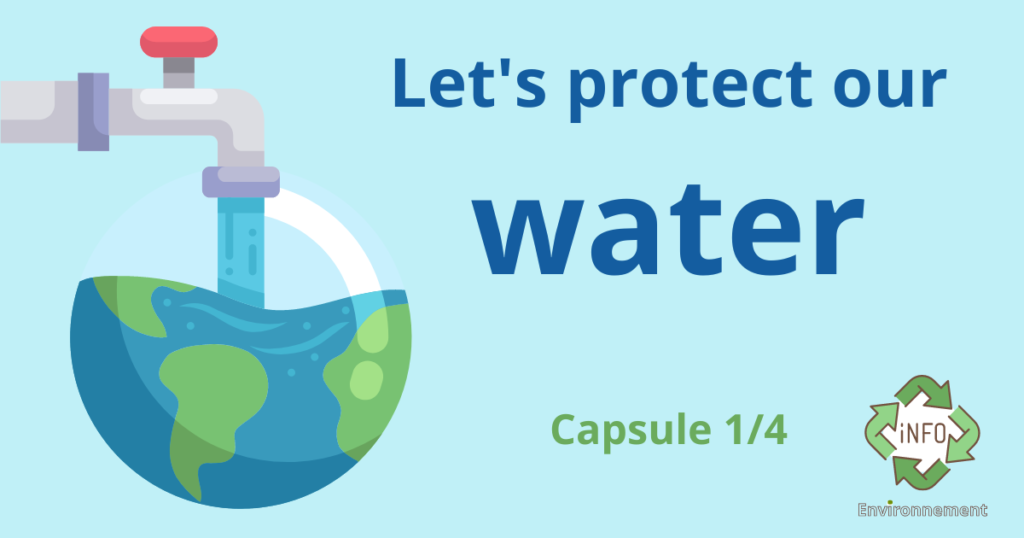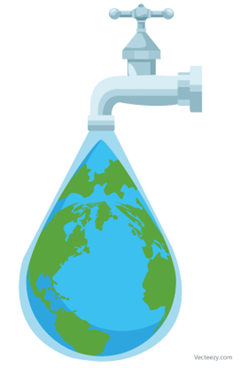Drinking water in Sutton (#1 of 4) – Portrait of the situation
In the context of 2023 Earth Day, the Environmental Advisory Committee (EAC) of the Town of Sutton is launching a series of 4 informative capsules on the theme of drinking water, its availability, its management and its sustainable use. For this first capsule, we draw up a portrait of the situation.

Did you know that the Town of Sutton has 2 distinct water systems coming from different water sources?
Village water system
The Village sector is served by a well that collects the underground water accumulated under the Boyce Marsh sector from where it is pumped to 2 reservoirs.
The “source” of water along route 215 is an old well from which the water flows naturally and is not treated.
Mountain water system
The Mountain sector is served by surface water collected in 2 reservoirs fed by streams whose watersheds include Vogel, Mud Pond and Spruce Lakes.
The water reservoir visible along chemin Réal is owned by Ski Sutton and is used to produce artificial snow. This snow production has no impact on the availability of water in the Montagne sector aqueduct since its collection, supervised and monitored by the Ministry of the Environment, is done downstream of the municipal water withdrawals.
Water consumption in Sutton
The quantity of water consumed by the community of Sutton connected to an aqueduct, 48% of the properties on the territory, is monitored by 3 flow meters (2 Village, 1 Montagne) that measure the volume of water distributed and more than 45 water meters installed in businesses.
According to the data available for 2022, the total quantity of water distributed in the Town’s aqueducts was 195,266 m3 for the Village (including 18,173 m3 for businesses) and 207,868 m3 for the Mountain (including 6,793 m3 for businesses) for a total of 403,134 m3. Considering that the metered businesses consumed a total of 24,965,298 liters, residential consumption is estimated at a total of 378,168,702 liters for 2022.
With 2552 residential dwellings served and an estimated 1.18 persons per dwelling, this equates to 3011 persons served and an estimated consumption of 344 liters per person per day.
The objective to be reached in 2025 according to the Quebec Strategy for Drinking Water Conservation (in French only) is 220 litres/person/day. This represents a 36% reduction compared to our current residential consumption.
Tip of the week to save drinking water

Did you know that it is possible to fill your pool or spa using precipitation water? In fact, by storing precipitation water (rain and melted snow) in tanks connected to the gutters of our roofs or by directing their water directly to your pool or spa, you could save thousands of liters of drinking water. It’s simple and very inexpensive, so take advantage of the abundant spring rainfall to give it a try!
To learn more about the Town of Sutton’s water withdrawals, their characteristics, their vulnerabilities and the quality of their water, consult the “Annual drinking water quality reports” as well as the “Vulnerability analyses of sources intended for drinking water supply” available here : https://sutton.ca/en/services-to-citizens/public-works/water-management/
Quebec Strategy for Drinking Water Conservation Information
All municipalities with a compliant drinking water distribution system participate in the Quebec Strategy for Drinking Water Conservation, which involves:
- The realization of a water balance to evaluate performance indicators;
- The implementation of a water conservation action plan;
- The implementation of a leak detection and repair program if the water loss indicators do not meet the objectives;
- Adopting and enforcing a municipal drinking water use bylaw;
- Measurement, data recording and verification of distributed water measurement instruments that are progressively being implemented to improve the reliability of performance indicators.
- Ecoconditionality: The annual approval of the Balance Sheet by the MAMH is a condition of eligibility for any application for financial assistance submitted under the water components of the infrastructure programs.
